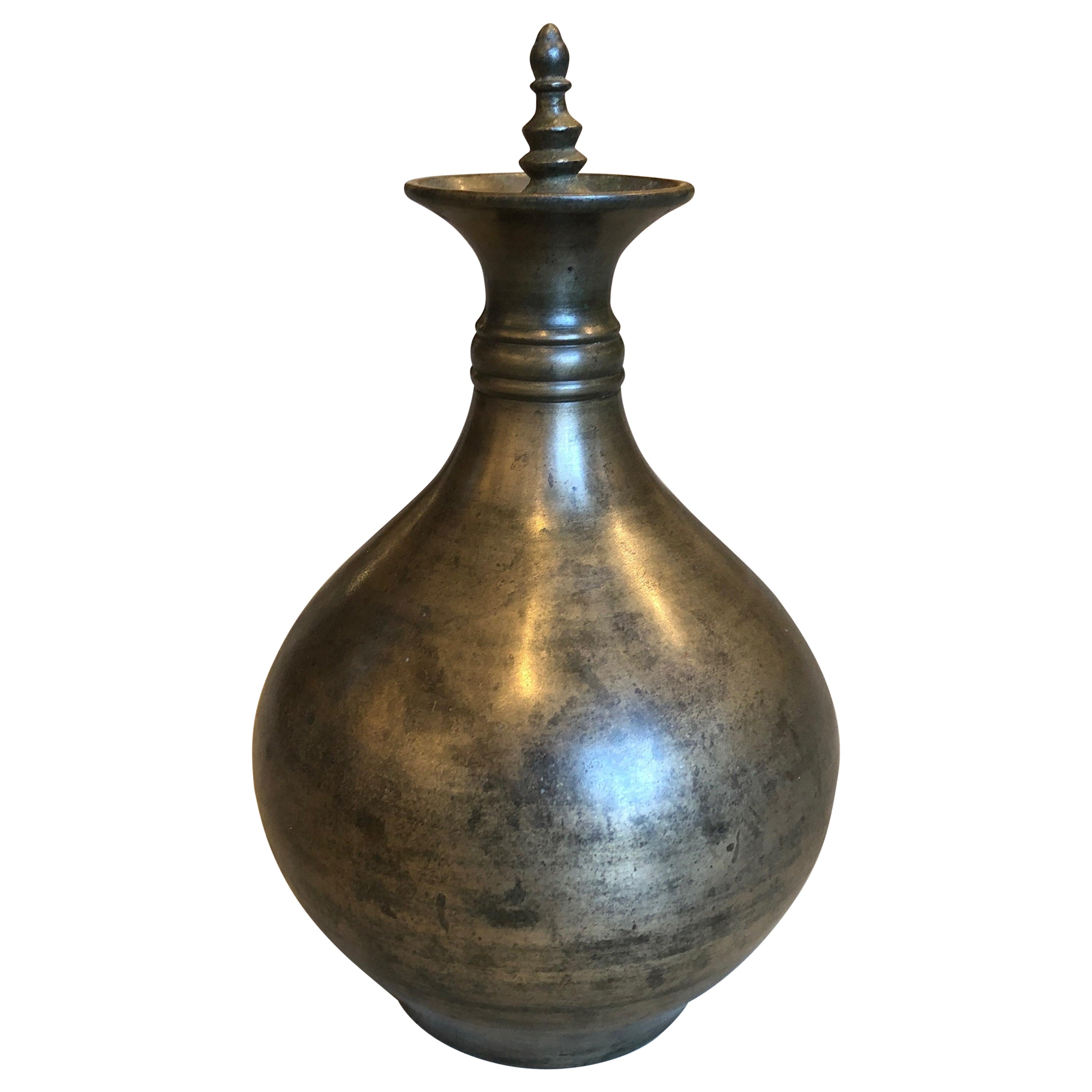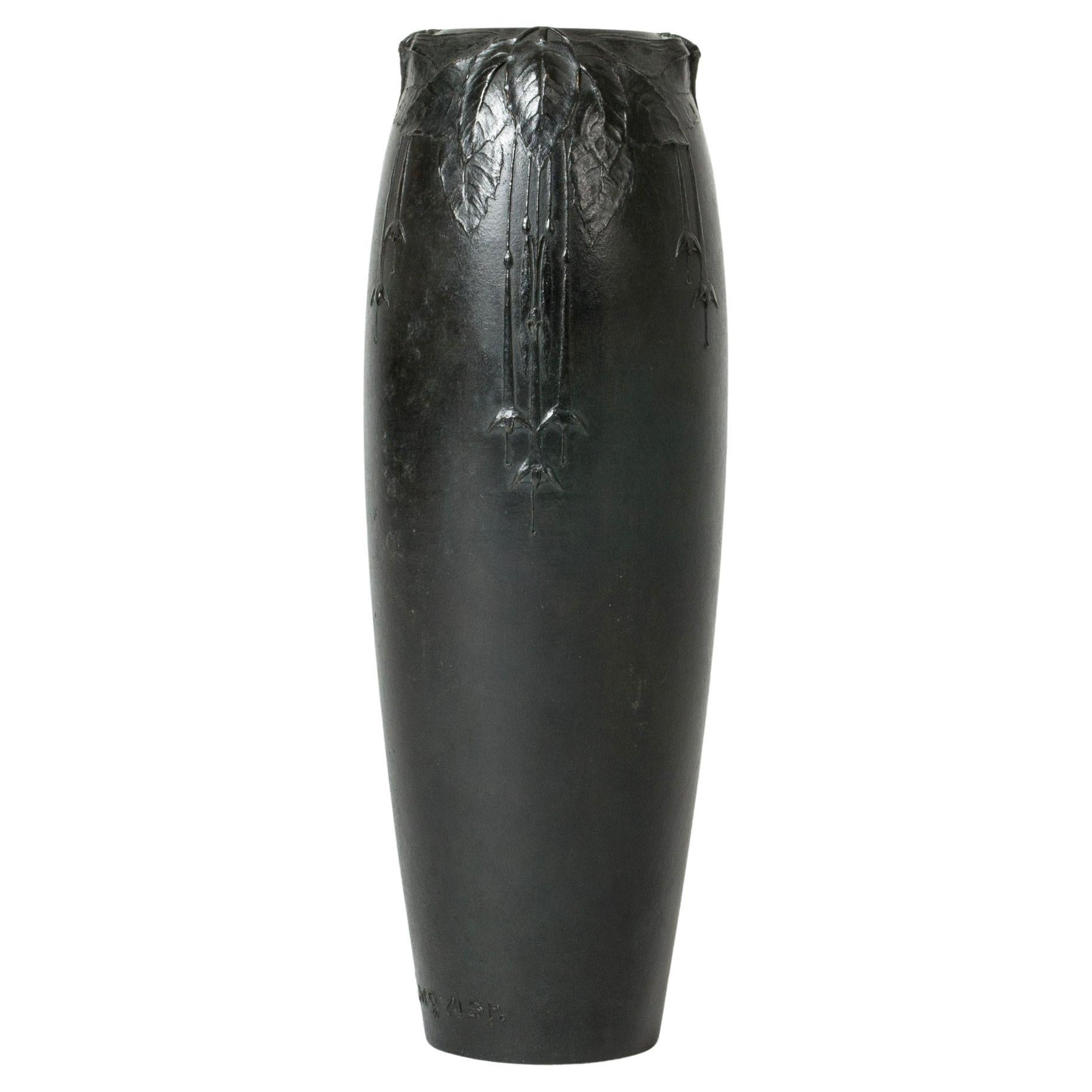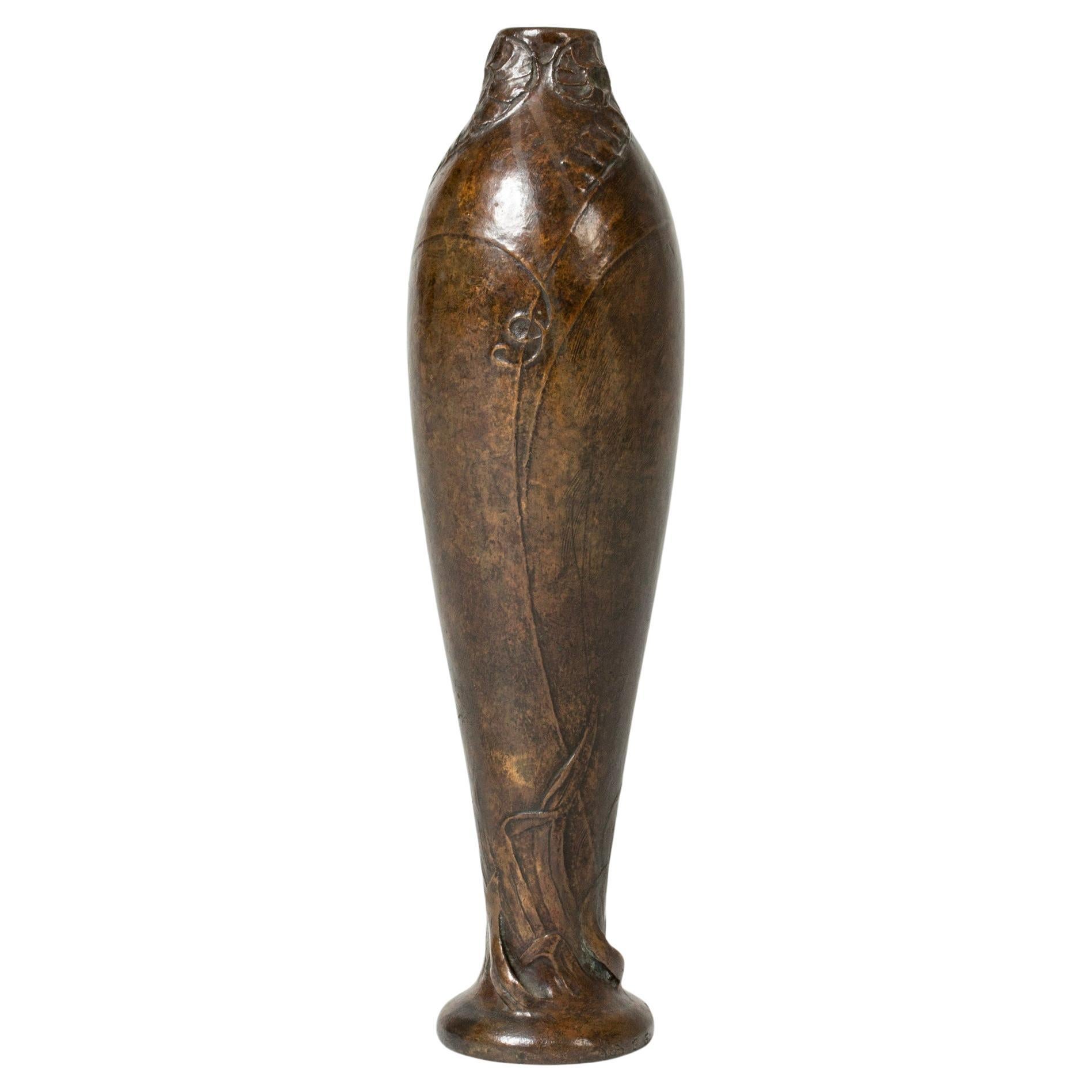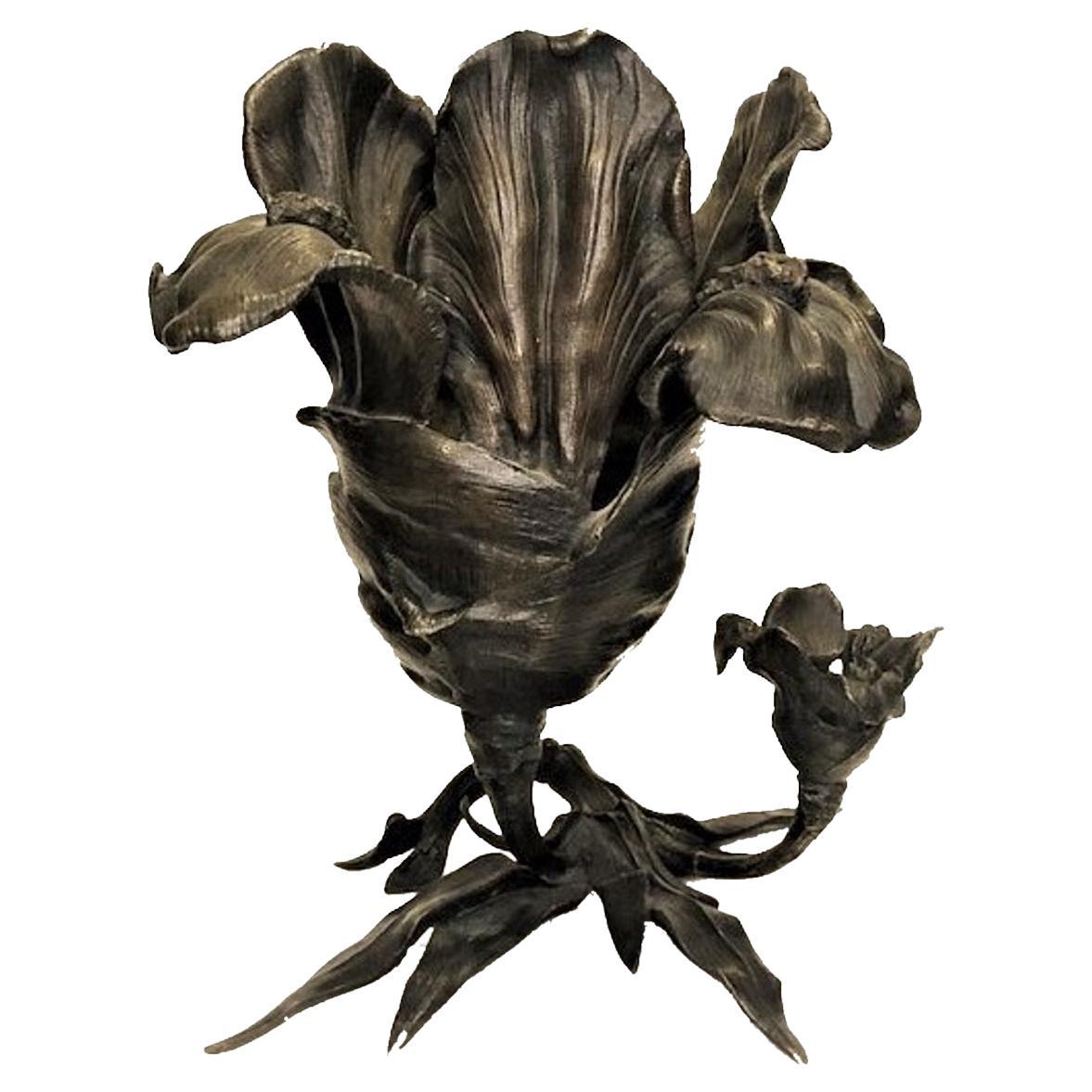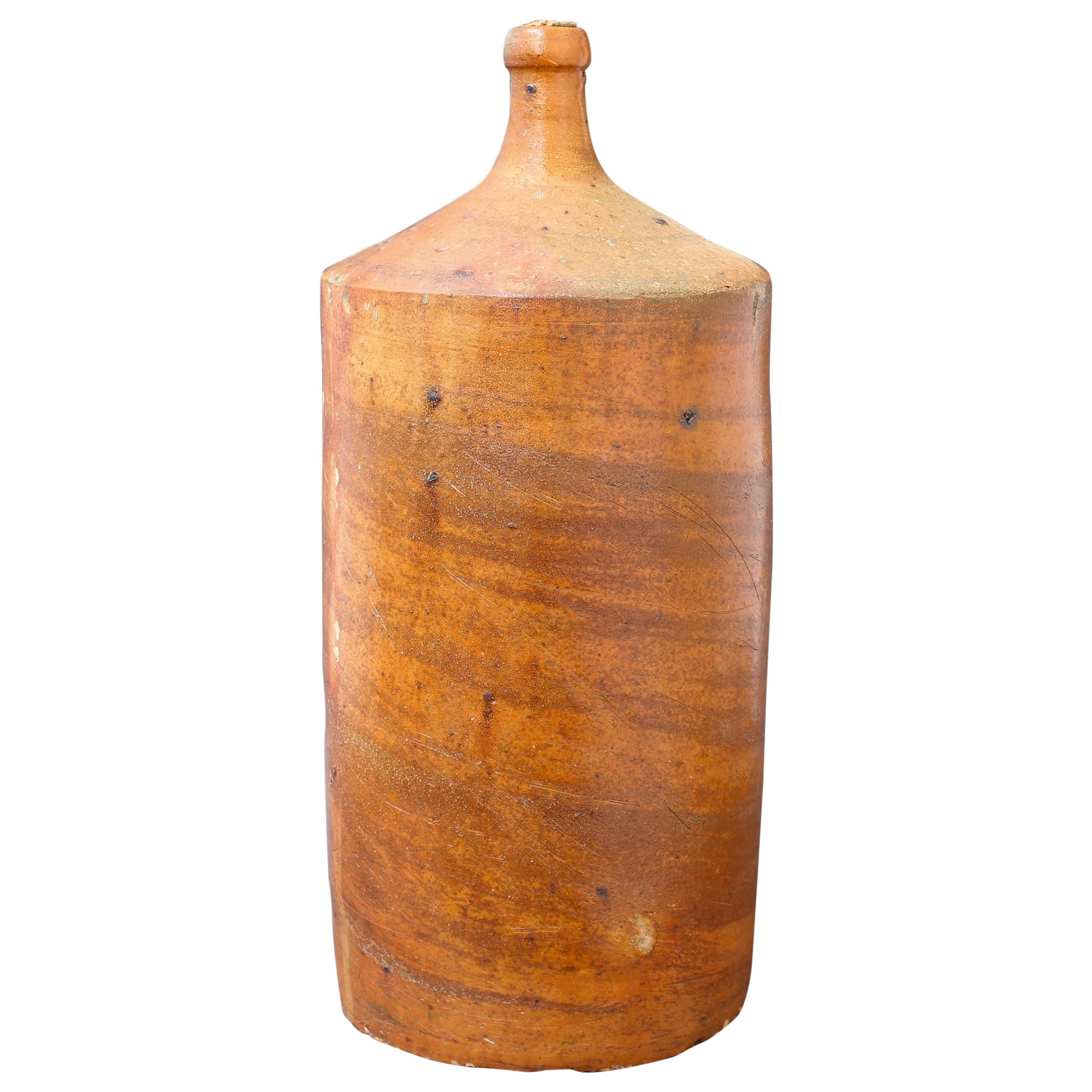Items Similar to Indian Dhokra Bronze Owl Containers, Ca. 1900, Pair
Want more images or videos?
Request additional images or videos from the seller
1 of 8
Indian Dhokra Bronze Owl Containers, Ca. 1900, Pair
About the Item
Two Indian Dhokra bronze figural containers in the form of owls, each with hinged lid in the form of the owl's head above an elaborately decorated body supported by two feet and a tail, apparently unmarked.
Dimensions: 10" H x 6" diameter (the larger).
Dealer: S138XX
- Dimensions:Height: 10 in (25.4 cm)Diameter: 6 in (15.24 cm)
- Sold As:Set of 2
- Style:Anglo-Indian (Of the Period)
- Materials and Techniques:
- Period:
- Date of Manufacture:Unknown
- Condition:Wear consistent with age and use. In good antique condition. Wear consistent with age and use.
- Seller Location:New York, NY
- Reference Number:
About the Seller
4.9
Vetted Seller
These experienced sellers undergo a comprehensive evaluation by our team of in-house experts.
1stDibs seller since 2010
2,439 sales on 1stDibs
Typical response time: 2 hours
- ShippingRetrieving quote...Ships From: New York, NY
- Return PolicyThis item cannot be returned.
More From This SellerView All
- German Vallerysthal (Attr.) Favrile Vase, ca 1900Located in New York, NYGerman Favrile style glass vase, with SV mark within a circle possibly for "Societe Vallerysthal" and in the manner of Tiffany Favrile glass, likely circa 1900. Dealer: S138XXCategory
Early 20th Century German Art Nouveau Vases
MaterialsGlass
- Indian Alabaster Vase w/ Semi-Precious Stone InlayLocated in New York, NYIndian alabaster vase / urn with semi-precious stones inlaid in a pattern of flowers and foliage, includes: malachite, turquoise, lapis lazuli, mother-of-pearl and others, unmarked. ...Category
20th Century Anglo-Indian Vases
MaterialsAlabaster
- Neoclassical Style Patinated Bronze Ewers, PairLocated in New York, NYPair of patinated bronze ewer form sculptures cast with Neoclassical manner decoration of foliate accents, bows, busts of putti below handles, and masques to front, mounted upon blac...Category
Mid-20th Century Neoclassical Urns
MaterialsBronze
- Indian Raj Period Miniature Howdah, ca. 1920Located in New York, NYRaj, likely first quarter 20th century, of typical form with rectangular slatted palanquin and elephant saddle, likley 19th C or later, possibly stained Sandalwood. Dimensions: 9....Category
Early 20th Century Anglo-Indian Benches
MaterialsSandalwood
- Neoclassical Bronze Covered Urns on Marble, PairLocated in New York, NYPair of Neoclassical Grand Tour patinated bronze covered tazza urns cast with floral decoration to bowls on bases with Greek Key borders, the pierced lids with ivy motif and surmount...Category
Mid-20th Century Grand Tour Urns
MaterialsMarble, Bronze
- Indian Enameled Copper Baluster VaseLocated in New York, NYIndian Enameled Copper Baluster Vase, tall with trumpet neck above turned and modeled body, socle, and foot. Dealer: S138XXCategory
20th Century Unknown Other Vases
MaterialsCopper
You May Also Like
- Antique Bronze Holy Water ContainerLocated in New York, NYA graceful, well cast and simply designed bronze holy water container. From India, circa 1900 or earlier, this piece will add interest and beauty to any tab...Category
Early 20th Century Indian Jars
MaterialsBronze
- Art Noveau Bronze vase by Hugo Elmqvist, Sweden, ca 1900Located in Stockholm, SEBeautiful Art Noveau vase in black patinated bronze, designed by Hugo Elmqvist. Elegant clean form with relief decor of leaves, flowers and dragonflies around the mouth.Category
Antique Early 1900s Swedish Scandinavian Modern Vases
MaterialsBronze
- Art Noveau Bronze vase by Hugo Elmqvist, Sweden, ca 1900Located in Stockholm, SEBeautiful Art Noveau vase in patinated bronze, designed by Hugo Elmqvist. Stately form with a heavy base, decorated with a dynamic relief of seaweed and crabs.Category
Antique Early 1900s Swedish Scandinavian Modern Vases
MaterialsBronze
- Art Noveau Bronze vase by Gerda Backlund, Sweden, ca 1900Located in Stockholm, SEBeautiful Art Noveau vase in patinated bronze, designed by Gerda Backlund. Slender, curvesome form with relief decor of grasses draping around the base, unfolding ferns around the to...Category
Antique Early 1900s Swedish Scandinavian Modern Vases
MaterialsBronze
- French Art Nouveau Patinated Bronze Sculptural Iris Vase, ca. 1900Located in New York, NYABOUT IRIS The iris is a special and mysterious flower. Not only because of its striking appearance, but also from an artistic and historical point of view. It is also like a work of art, as though created by Mother Nature. The unique leaves of this plant not only create wonderful shadow casts, but also look as if they were painted by hand. It's no wonder that iris acts as the muse for countless artists, and can be seen in many famous works of art. The iris was first spotted in the time of Pharaoh Thutmose, in 1504 BC. He had the iris inscribed into the wall reliefs of a temple as a sign of his power, as well as decorating his sceptre with motifs of the flower. Since then, the iris has been a symbol of victory in Egypt. But the symbolism of the iris goes further than that. In Japan, the flower represents courage and is the symbol of the boys' festival. In Islamic cultures, the iris is a symbol of prosperity. In Europe, the flower was a popular weapon symbol in the Middle Ages and stood for chivalry. And in Christianity, the iris was seen as a symbol of the trinity because of its three-part flowers. With more than 300 varieties, the iris is now the most popular flower among growers and gardeners following the rose. Countless artists use the iris in their works and the flower is present in all eras. You can see the flower on furniture, vases, jewelry, fabrics, sculptures, coats of arms and much more. Did you know that the iris is also called the sword lily? It's not a coincidence that it used to symbolize physical and emotional pain and suffering caused by a weapon. We also see the flower in religious art, where it's often associated with Mary and Jesus. The iris is also associated with the Greek goddess Iris, where the flower symbolizes reconciliation and divine messages. This is also reflected in many paintings. Finally, the iris is also visible in Dutch and Flemish still-life paintings. This can be in a religious form, incorporated into an object or as a decorative flower. In the Art Nouveau art movement, the iris (along with other plants, such as the birch) was often used as an expression of feminine beauty. With its almost otherworldly appearance, the iris is perfectly suited to the Art Nouveau aesthetic and is featured in many well-known works of art. The poet of that era, Hermann Hesse...Category
Antique Early 1900s French Art Nouveau Planters, Cachepots and Jardinières
MaterialsBronze
- French Antique Olive Oil Earthenware Container (circa 1900)Located in London, GBA delightfully rustic, antique, hand-crafted earthenware olive oil vessel (circa 1900) sourced from Avignon, France, in Provence from a seller who indicated it was from the Auvergne ...Category
Early 20th Century French Bottles
MaterialsEarthenware
Recently Viewed
View AllMore Ways To Browse
Antique Butter Churn Jar
By Thijs
Chinese Chrysanthemum Jar
Lilia Cruz
Japanese Antique Temple Jar
Vintage Oriental Ginger Jar
Vintage Orange Canisters
Vintage Red Kitchen Canisters
Brown And White Temple Jar
Vintage Marmalade Jars
Talavera Water Fountain
Vintage Small Garbage
Vintage Pottery Jars
Mid Century Italian Jar
Italy Antique Jar
Japanese Stoneware Jars
Greenapple Ceramic
Repousse Jar
